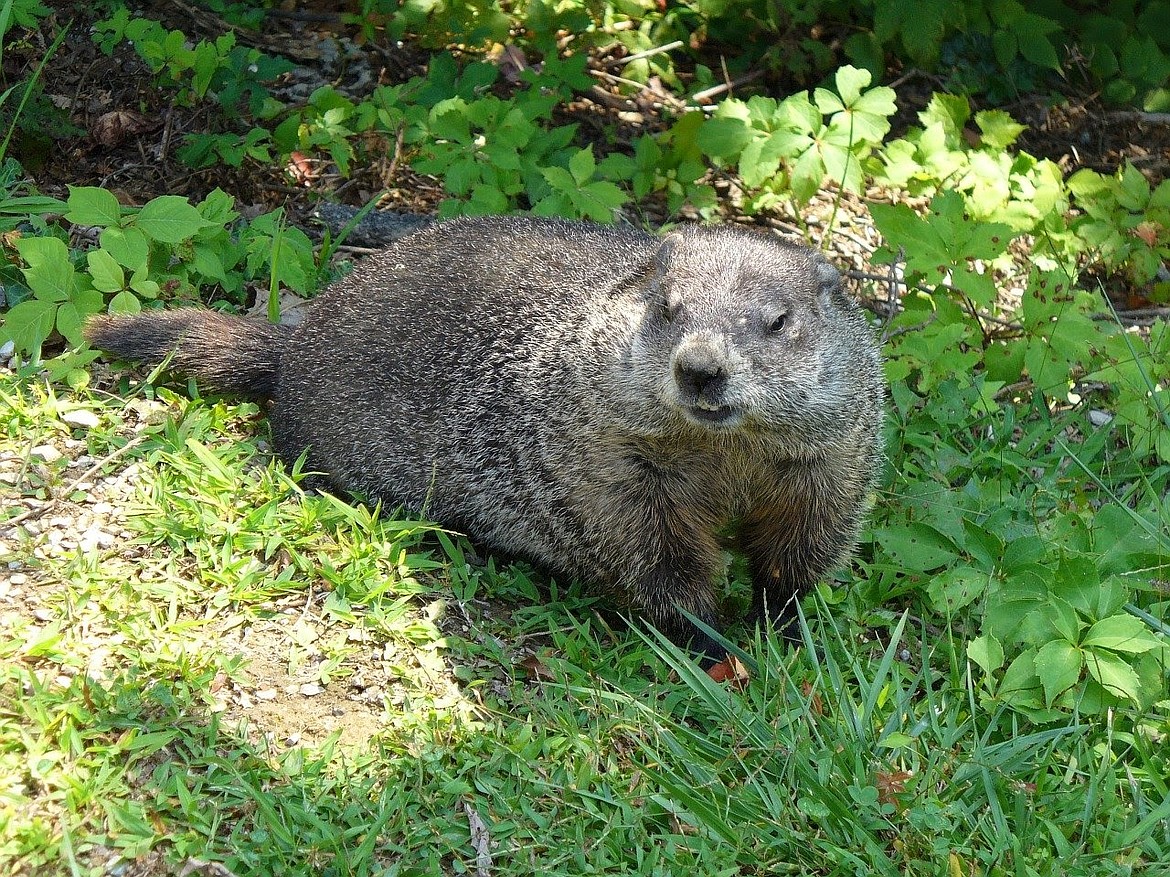Critters of North Idaho: Groundhog
I hope you like snow and cold weather, because we’re having six more weeks of winter this year. At least, that’s the forecast according to everyone’s favorite weather-rodent, Puxsutawny Phil the groundhog. While most groundhogs can’t predict the weather, there are a number of other things that help them stand out from the rest of the animal kingdom.
Also known as the woodchuck or whistlepig, the groundhog (Marmota monax) is a rodent belonging to the squirrel family. They’re quite literally short pudgy ground squirrels. They tend to weigh anywhere between 4 and 13 pounds and measure 16 to 27 inches. This makes it the largest member of the squirrel family wherever it lives, except in British Columbia where it resides alongside the hoary marmot. These little mammals are covered in a fine coat of brown fur from head to tail.
Groundhogs are very adaptable and can be found in a wide variety of low-altitude grassy fields, pastures, and lightly-wooded areas with plentiful ground vegetation. They are comfortable living near people and actually have increased in number as humans colonize the wilderness, building roads and farmlands and clearing forests. Their distribution is also widespread, as they’re found across much of the North American continent. When they’re not chucking wood (more on that later!) or predicting the weather, groundhogs are eating. They spend the summer months stuffing up on grass, alfalfa, clover, dandelion and other plants. They need to be nice and plump by wintertime so they can slumber until spring brings the return of food growth and warm weather.
You’re probably already aware that a groundhog’s home is called a den, which they excavate themselves, but did you know they typically like to have two of them? One they use in the summer. This one will be located in a grassier area where they have easy access to food. The other den is used for wintertime hibernation. It is usually located in a forested area where there is plenty of shrubbery concealing the den’s whereabouts from nosy predators. The average groundhog den is about 20 feet long and descends 6 feet below surface level. Female groundhogs use the den as a safe place to raise their young. They usually have five or six offspring, called pups, at a time. The mothers suckle them for 44 days and by two months old they are off on their own. Usually this involves finding a place to dig a new den, but some female groundhogs inherit the one their mother used.
In addition to predicting the weather, there’s something else groundhogs, aka woodchucks, are famous for. How much wood would a woodchuck chuck if a woodchuck could chuck wood? The key word here is if, because it turns out in fact that groundhogs do not chuck wood … but who are we kidding? We still want an answer!
New York Fish and Wildlife technician Richard Thomas got so fed up with being asked this question that he decided to find out. He calculated the volume of dirt groundhogs removed in order to excavate their dens (about 35 square feet) and converted it to the equivalent volume of wood. His results? “... about 700 pounds on a good day, with the wind at his back. I thought everybody knew that.”*
*This was originally published in the Associated Press, 1988. (Spokane Chronicle (July 11, 1988), p. A9)
• • •
animaladventures1314@gmail.com

